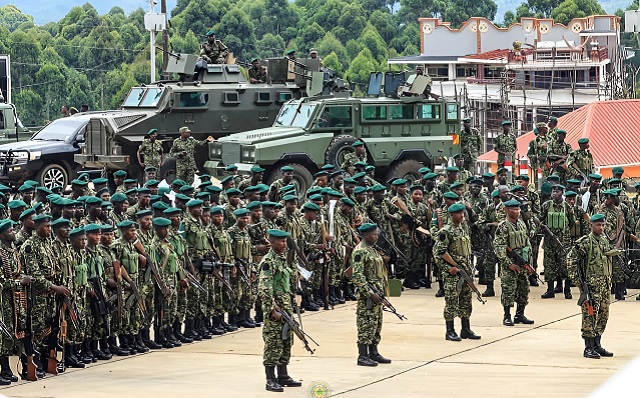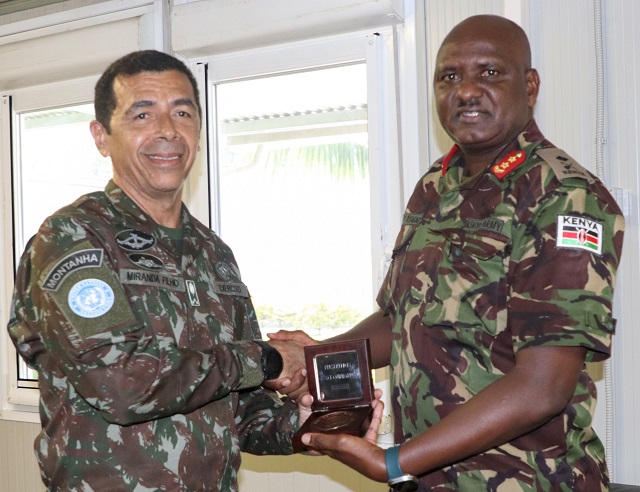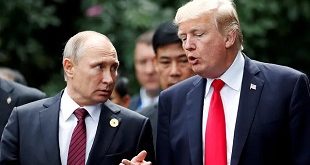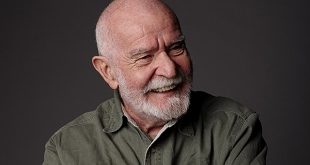
Expert reports warn of weak links, mission creep
Kampala, Uganda | IAN KATUSIIME | The Eastern African Community Regional Force (EACRF) deployed in eastern Democratic Republic of Congo seems to be the fastest growing movement in the region. But the presence of additional armed personnel in an area crawling with numerous armed militia is raising debate about whether it brings new prospects for peace or potential for conflict.
In April, South Sudan, which is considered the weakest link of the community, deployed its contingent joining Kenya, Burundi and Uganda. Kenya was the first country to deploy under the regional arrangement.
The Twitter page of the EACRF said with the entry of South Sudan forces now based at Rumangabo Forward Operating Base, the EACRF had achieved “full deployment status.” The deployments follow a directive by the EAC Heads of State at the 20 Extra-Ordinary Summit held in Burundi in February.
Rumangabo operating base falls within the territories of Rutshuru and Masisi; the latter which has seen an ugly history of atrocities over the proxy wars in the mineral rich country. The Uganda Peoples Defence Forces (UPDF) deployed 5000 troops to Rutshuru which is officially designated as a multinational area for the regional force aimed at bringing peace and stability to a region that has known only anarchy for decades.
Chief of Defence Forces (CDF) Gen. Wilson Mbadi and UPDF Commander Land Forces Lt Gen. Kayanja Muhanga were in Rutshuru recently to motivate their charges. They explained that the EACRF deployment is operationally different from Operation Shujaa that Uganda runs in the eastern DRC.
“Unlike the Shujaa Operation on the other side of the DR Congo where we directly attack the enemy, the mission here is to witness a process of achieving peace in Rutshuru territory and the neighbouring areas in the North Kivu province in the DR Congo,” Gen. Kayanja told the mission.
Uganda’s deployment means that it has vastly expanded the scope of its mission in eastern Congo; on one hand it is on an offensive against the Allied Democratic Forces (ADF) and on another it is on a peacekeeping mission in a different pocket of the country. The latest deployment means Uganda has an estimated 9000 troops in eastern Congo, 4000 for Operation Shujaa and 5000 in the peacekeeping effort.
Whereas Kenya and Burundi deployed its troops to go after the notorious M23- the long surviving militia said to be backed by Rwanda, Uganda’s brief is decidedly not to fight the group as President Museveni made clear when the 5000 Ugandan troop contingent was being prepared.
“We are not going to battle or fight the M-23. The Congo government and the M-23, have agreed to a peace plan, which involves cessation of hostilities (fighting), withdrawal of the M-23 from some of the specified areas they had captured to other areas that have been agreed upon, etc.,” Museveni said.
Indeed, there has been a detente as M23 has gone quiet. But trouble could emerge when the M23 renews hostilities over a grievance or provocation as has happened in the past.
“Our initial mission, therefore, is to occupy some of the positions that the M-23 has handed over to the East African Force as a neutral force, instead of the Congolese Army which the M-23 see as enemies or armed opponents in their internal politics,” Museveni explained in his letter of March 31.

The UPDF is occupying M23’s former positions as bulwarks against the Congolese army and other new entrants like Kenya Defence Forces or South Sudanese army who are not be well versed with the intrigue of eastern Congo.
EACRF
The commander of the EACRF is Maj. Gen. Jeff Nyagah and he has been busy in the last few weeks overseeing withdrawal of M23 from agreed areas. He has briefed UN Security Council members on the status of eastern Congo and managed to get some assurances of support should violence break out.
Nyagah has also met with the Force Commander of the United Nations Organization Stabilisation Mission in the Democratic Republic (MONUSCO), Lt. Gen. Otávio Rodrigues, and worked out areas of coordination and collaboration.
Last year, MONSUCO withdrew from some of its tactical bases but the blue helmets are stationed not far away from the EACRF. Some observers have already commented that the regional force is starting to look like its UN counterpart which has been stationed in DRC since 1999.
Gen. Nyagah’s real test however may be an outbreak of fighting. Eastern Congo is known for harbouring several militants and on March 26, EACRF reported that the Burundian contingent had repulsed an attack on civilians by an armed group within the dangerous Masisi territory.
The M23 which spent a large part of last year waging attacks on the DRC is being watched. It launched attacks on Congolese citizens and government forces over what it calls unfulfilled pledges by the government of Felix Tshisekedi who is up for an election later this year.
M23 has been a catalyst of Rwanda-DRC animosity with counter accusations and recriminations. DRC stated it did not want Rwandan troops in the joint military force because of the latter’s alleged association with M23.
Kenyan President William Ruto on a recent visit to Rwanda, discussed the security situation in eastern DRC with his counterpart, President Paul Kagame, although the specifics of their discussion were not revealed. However last year while flagging off Kenyan troops, Ruto said Kenya has a duty to meet DRC halfway and stand together until the job is done.
The 12th East African Armed Forces Field Training Exercise that took place in Jinja, eastern Uganda last year laid the ground for the current force. The two week exercise included troops from all the East African Community (EAC) partner states Uganda, Tanzania, Rwanda, Burundi, South Sudan, and Kenya. The EAC’s newest member, the Democratic Republic of Congo (DRC), sent 10 observers.
The main objective of the exercise was to train the partner states’ armed forces, police, civilian components and other stakeholders in planning and conducting an integrated mission encompassing peace support operations, disaster management, counter terrorism, and counter piracy.
Warnings on military operations
Analysts and a couple of reports have offered commentary on the situation in eastern DRC expressing worry about the potentiality of a forever war. A report released in May 2022 by International Crisis Group, (ICG), a Belgium-based think tank had some prescient advice for President Tshisekedi.
Titled ‘Easing the Turmoil in the Eastern DR Congo and the Great Lakes’, the report urged Tshisekedi to set rules for foreign intervention in his country. It came out at the time M23 was about to launch a fresh offensive that would displace thousands.
The report warned about DRC becoming a regional battleground once more and months later, it is the exact situation at play.
“The Congolese president could set rules for any foreign intervention, clarifying the objectives, duration and potentially the area of operation of those he has greenlighted, particularly that of Uganda,” it stated. The ICG authors said Tshisekedi may have opened a “Pandora’s box” by inviting troops from neighbouring countries to fight rebels based in his country.
A month later, another report titled ‘Uganda’s Operation Shujaa in the DRC: Fighting the ADF or Securing Economic Interests?’ from a New York non-profit sounded similar warnings. Congo Research Group, focused itself on Uganda’s Operation Shujaa. “Both the Ugandan government and private business stand to benefit from the military operations. They allow Dott Services, a Ugandan construction company, and TotalEnergies; a French oil company, to further their interests,” it noted.
The study said it was focused on understanding the range of other economic, geopolitical, and security motives involved. In particular, the paper argued how the military operation likely also aimed to protect Uganda’s oil deposits and infrastructure around Lake Albert; and to build roads to expand the market for Ugandan goods.
 The Independent Uganda: You get the Truth we Pay the Price
The Independent Uganda: You get the Truth we Pay the Price



